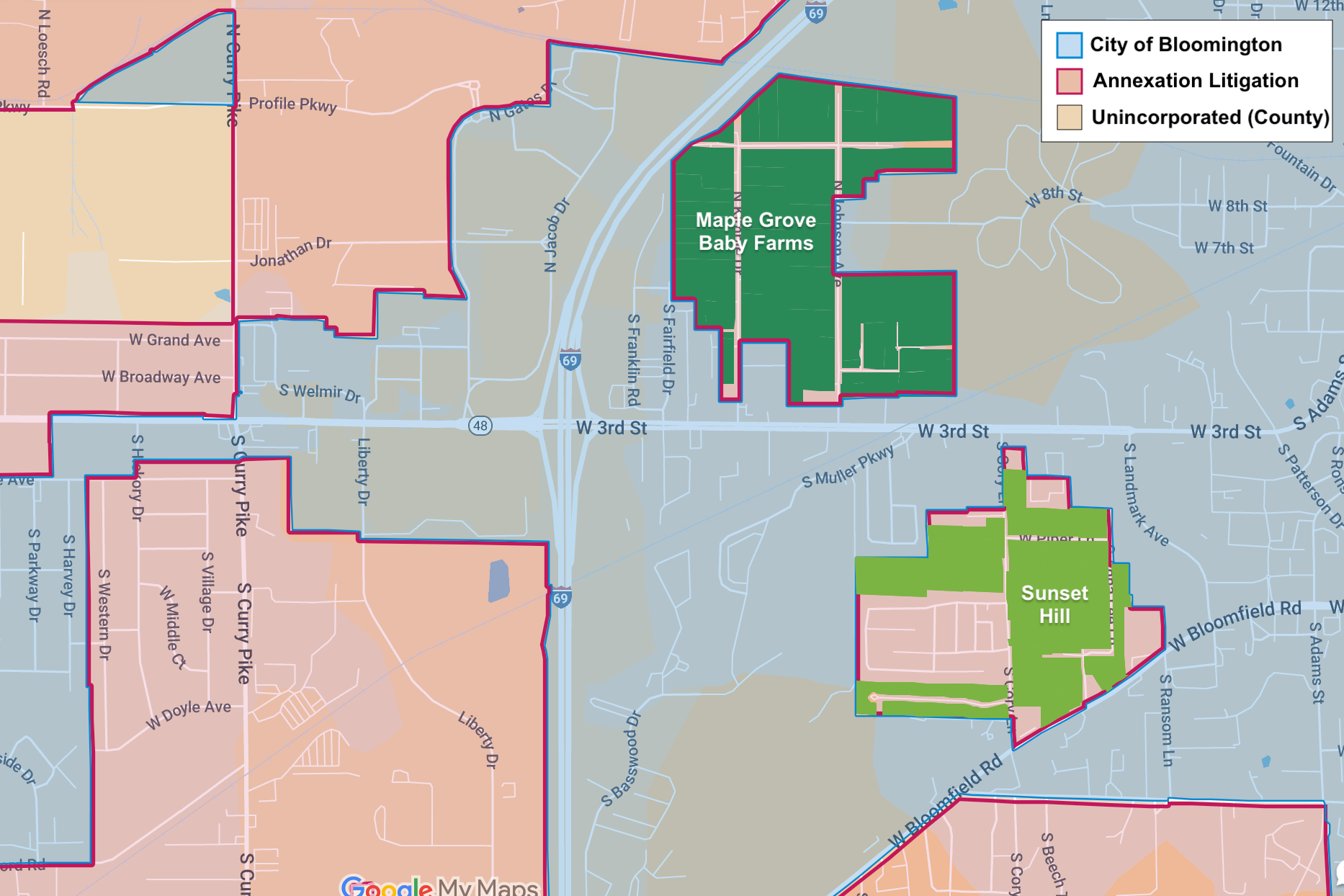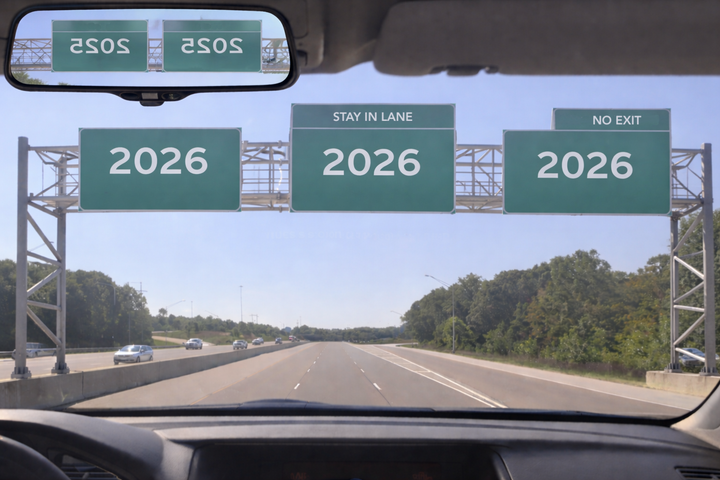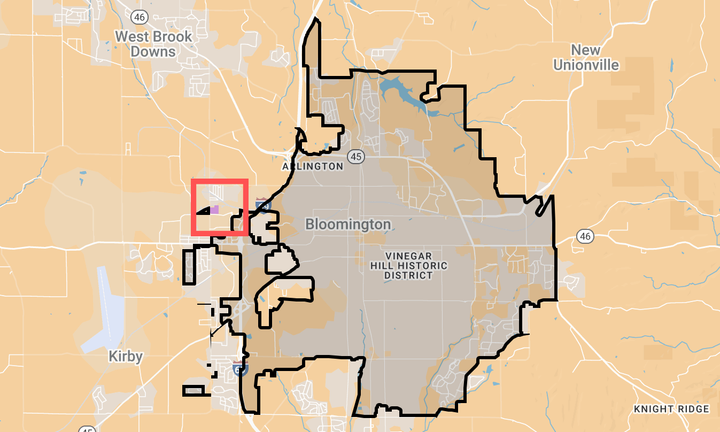Growth: Fallacy or imperative? More than 200 parcels downzoned on 2–1 vote by Monroe County commissioners

More than 200 parcels in the unincorporated area of Monroe County have been downzoned on two separate 2–1 votes of the county commissioners.
The vote came at this week's regular Thursday morning meeting of the commissioners. Dissenting was Jody Madeira. Forming the two-person majority were Lee Jones and Julie Thomas.
The zoning for the parcels was changed from HD (High Development) to RES (Residential 1).
The outcome was expected, given that the rezone request was initiated by the commissioners—in late 2024, when Penny Githens was still representing District 3. The commissioners initiated the rezone on Dec. 18, 2024, the same day they voted to adopt the CDO (County Development Ordinance).
Madeira, who prevailed in the Democratic Party's primary against Githens, did not take office until the start of 2025. Madeira campaigned on higher density and increased housing for Monroe County.
Thursday's approval was also expected based on the 6–2 vote by the Monroe County plan commission in mid-March, to send the downzone proposal to commissioners with a favorable recommendation.
The land area in the basic proposal totalled about 175 acres. But several individual parcels were excluded from the rezone, because of their existing multi-family uses.
Two votes were taken. One of the votes was for parcels in the Maple Grove Baby Farms subdivision, and the other in the Sunset Hill subdivision. The two subdivisions are part of "islands" surrounded by the city of Bloomington, which make up Area 3 and Area 4 in the attempted annexation of land by Bloomington—which started in 2017 and is still languishing under litigation.
The allowable housing types are a big part of the difference between HD and RES. In the HD zone, multi-family apartments with three or four units, as well as those with more than 5 units, are permitted uses. In contrast, the RES zone does not include multi-family dwellings. Also allowed in the HD zone are single-family attached dwellings with three to five units. Two-family dwellings are permitted in the HD zone, but they are listed only as a conditional use in the RES zone. However, single-family paired dwellings (two units) are allowed in RES.
For both of the subdivisions, the rezone rationale for commissioners, when they first initiated the rezone, took into account the fact that areas include older established neighborhoods, and most of the homes use septic systems without access to sewer service (at least not now). Also factoring into the rationale was the presence of karst/sinkholes in the area, and the interest in preserving the overall character of the area. For the Sunset Hill subdivision, an additional part of the rationale was the historic preservation overlay that was granted to 25 parcels late last year, also on the same day the CDO (County Development Ordinance) was approved by commissioners.
In dissenting, Madeira pointed to the section of state planning code (Section 603) that lays out the criteria that the commissioners are supposed to consider when considering rezone proposals. Madeira said, "But I would give due consideration to Section 603, and that's sort of where my thoughts have been going in this matter." Maderia noted that Monroe County's comprehensive plan has not been updated since 2012. The comprehensive plan is the first on the list of factors to be given consideration:
IC 36-7-4 Zoning ordinance; preparation and consideration of proposals
Sec. 603. In preparing and considering proposals under the 600 series, the plan commission and the legislative body shall pay reasonable regard to:
(1) the comprehensive plan;
(2) current conditions and the character of current structures and uses in each district;
(3) the most desirable use for which the land in each district is adapted;
(4) the conservation of property values throughout the jurisdiction; and
(5) responsible development and growth.
The role of the comprehensive plan as one of the factors, not necessarily a deciding factor by itself, has been established in court cases. A court of appeals opinion from 2022 (Becerra v. Town of Brownsburg) reviews some of the history of a previous case (Borsuk v. Town of St. John), which was appealed to the Indiana Supreme Court. In the Borsuk case, the state's highest court reversed the court of appeals, which had found that a decision by the town to reject a rezone petition was not in line with the town's comprehensive plan.
In the Borsuk case, the Indiana Supreme Court found that all the statutory factors have to be considered, and that the town had paid reasonable regard to the comprehensive plan, and the other factors. The Beccerra opinion characterizes the Borsuk precedent like this:: "Despite apparent contradictions of the rezoning petition with the town's comprehensive plan, our supreme court maintained that all the statutory factors had been considered and the town's decision was rational."
Growth
One of the big themes of Thursday's discussion on the downzone came from item (5) on the list of considerations in the state law that Madeira mentioned (emphasis added): "responsible development and growth."
When Madeira first mentioned the state law, and its factors for consideration, she noted the subjectivity of the criteria: "It is subjective what is considered responsible development and growth, and that often evolves as certain areas evolve."
During his public comments, Christoper Emge, director of advocacy for the Greater Bloomington Chamber of Commerce, weighed in against the downzone, reasoning that it did not promote growth. Reducing housing capacity in very urbanized areas hinders economic growth and conflicts with the county's own long term developmental goals, Emge said. With the almost certain passage of a bill in this year's legislative session that will reduce property tax revenues to local units, Emge said, "In order to meet those needs of all county residents, that pie needs to grow. The best way to do that is growth."
Monroe County plan commissioner Margaret Clements, and a leader of the remonstration effort against Bloomington's annexations, called growth a "fallacy," saying that Bloomington's population hasn't really grown.
The census numbers support the contention by Clements that in the last several years, Bloomington's population has not increased. The results of the 2020 census for Bloomington showed a drop from 2010, when 80,405 Bloomington residents were counted, to 79,168. But the numbers were impacted by the COVID-19 pandemic, which resulted in clear undercounting of college students in Bloomington.
So, immediately after the 2020 census numbers were released, the expectation from many observers was that the ACS (American Community Survey) estimates starting in 2021 would show an increasing trend from the baseline of about 79,000. But that's not what the ACS numbers show. The most recent ACS estimates indicate that Bloomington is losing population. Here's the ACS trend: 78,988 (2021), 77,358 (2022) and 74,028 (2023).
Clements stressed supporting long-term residents. "We…need to consider whether or not we're pushing people away or pulling them in, and I would argue that we've been pushing people away—we're not pulling them in."
Madeira countered the idea that growth is a fallacy: "Growth is an imperative. It is not a fallacy. The trick is to get it in appropriate times and places and spaces."
Madeira continued, "We are elected not just to serve long-term residents of communities, but to represent all residents of communities, including property owners, including business owners." Madeira described balancing the interests of all the residents of a community part of the whole idea of democracy: "I'm very respectful and appreciative of this democratic pull and tug and the opportunity to have a say in this pull and tug." She wrapped up the same way she started: "I think growth is a communal imperative."
Lee Jones took on the idea of "sustainable growth" calling it an oxymoron."We cannot grow forever and ever and ever—that's not possible," Jones said. Jones said most community members "are not desperately anxious to see major changes" and have chosen Monroe County specifically because "it suits them the way it is."
Jones said she was elected by current residents, not potential future residents, and prioritizes their wishes. "No one who wanted to move to this community voted for me," Jones said. She added, "I think it's extremely important that I pay attention to what I hear from the majority of the people of this community, which is that they like it. They like it as it is."




Comments ()